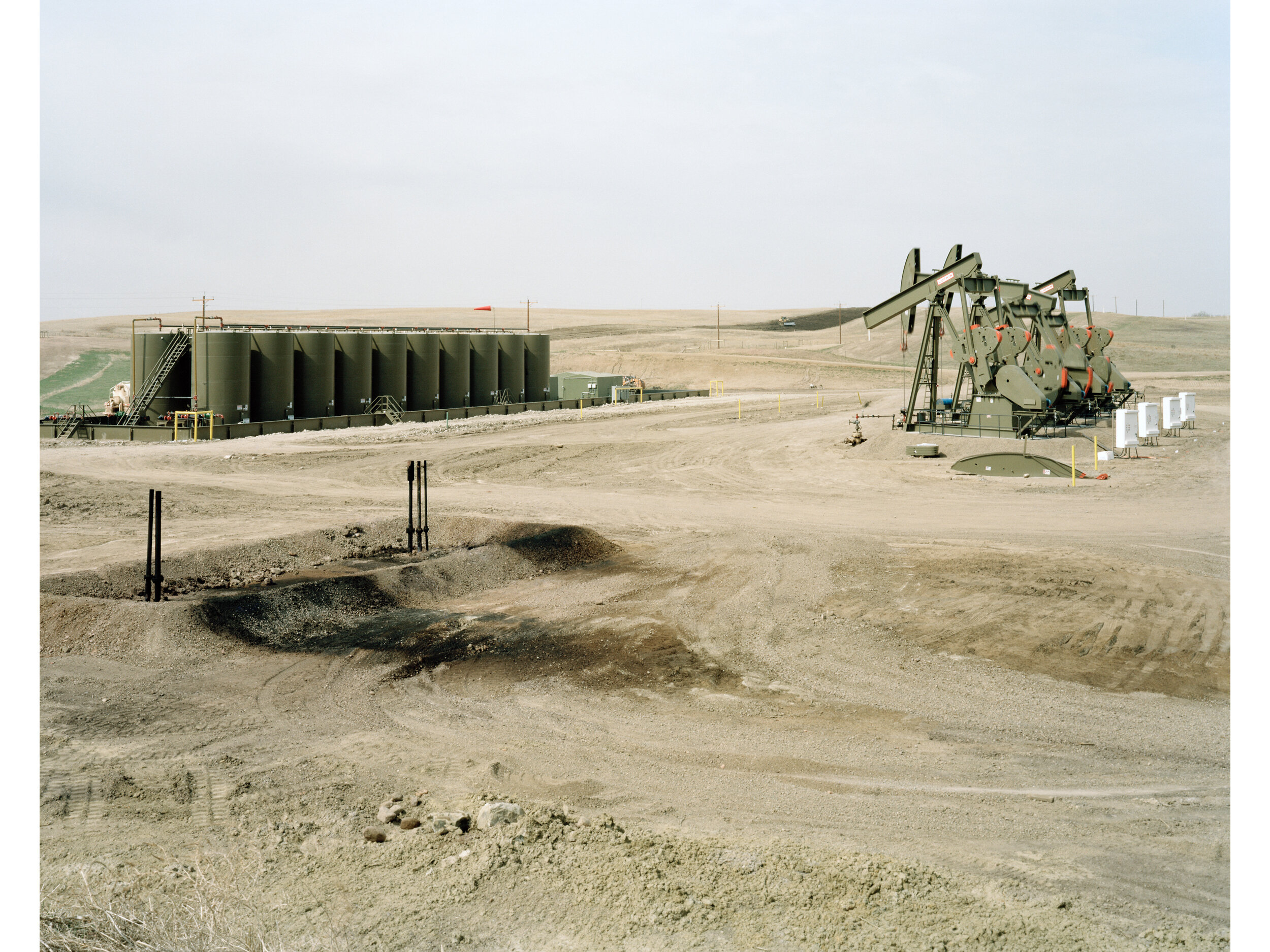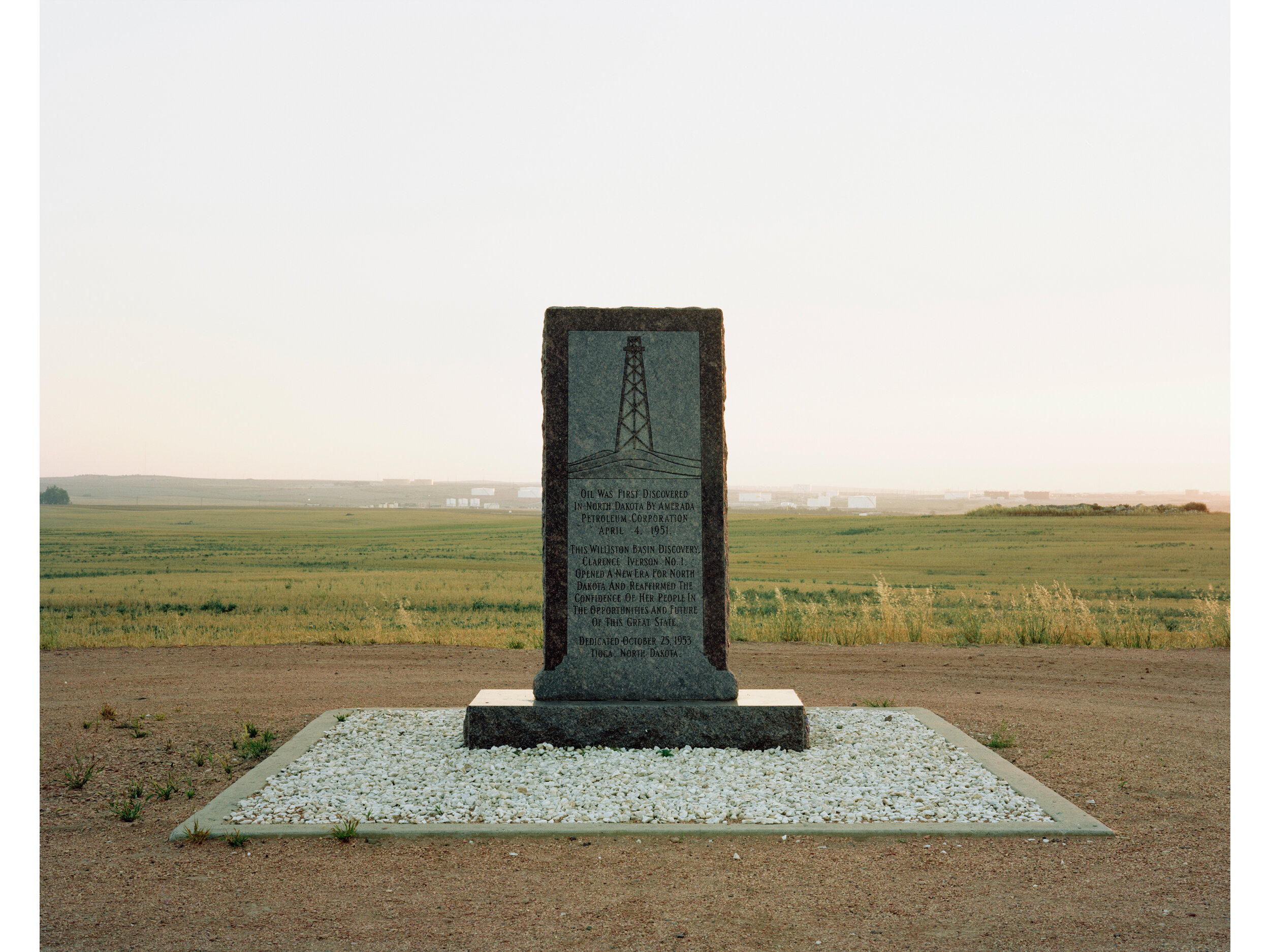When the Landscape is Quiet Again: North Dakota’s Oil Boom, 2012-Present
Since 2012, I have been documenting the legacy of oil booms and busts in my home state of North Dakota. My photographs bear witness to the transformation of its quiet agrarian landscape into an industrialized zone dotted with well sites, criss-crossed by pipelines, illuminated by natural gas flares, contaminated by oil and saltwater spills, and fracked beyond recognition.
Everyone wants a piece of the action, including my family: since the Bakken Boom began, we have been profiting from oil wells drilled on land my great-grandparents homesteaded in 1912. Although many other families are doing the same, I started this project to reconcile our involvement with the hidden costs of this prosperity.
In 1973, North Dakota’s governor, Art Link, envisioned: “We do not want to halt progress… We simply want to insure the most efficient and environmentally sound method of utilizing our precious resources for the benefit of the broadest number of people possible. And when we are through with that and the landscape is quiet again…let those who follow and repopulate the land be able to say, our grandparents did their job well. The land is as good and in some cases better than before.”
Unfortunately, his hope for the future remains a fantasy: our grandparents did not do their job well. I examine the scars from prior boom-and-bust cycles and the new wounds being inflicted upon my home because the status quo must change: something needs to be left for the next generation, not the next quarter.























































